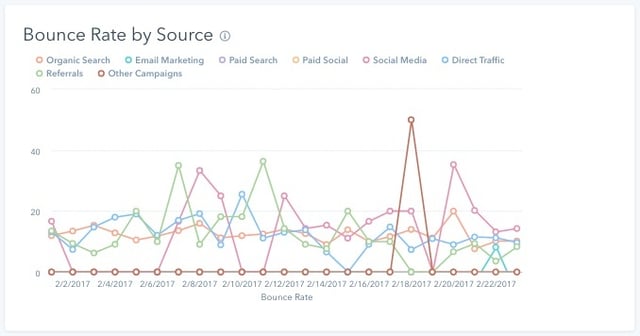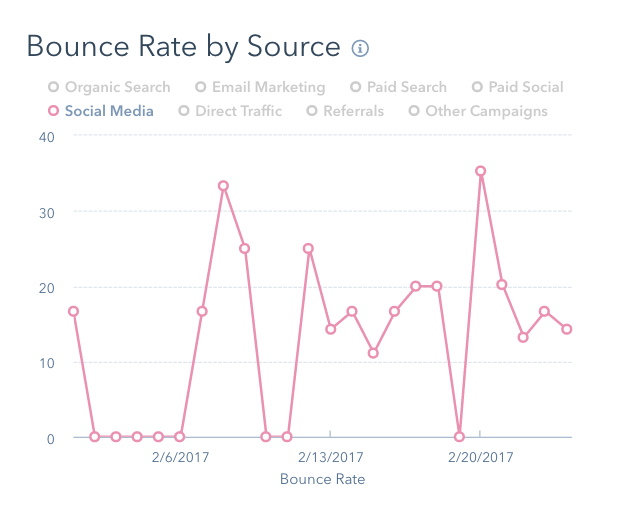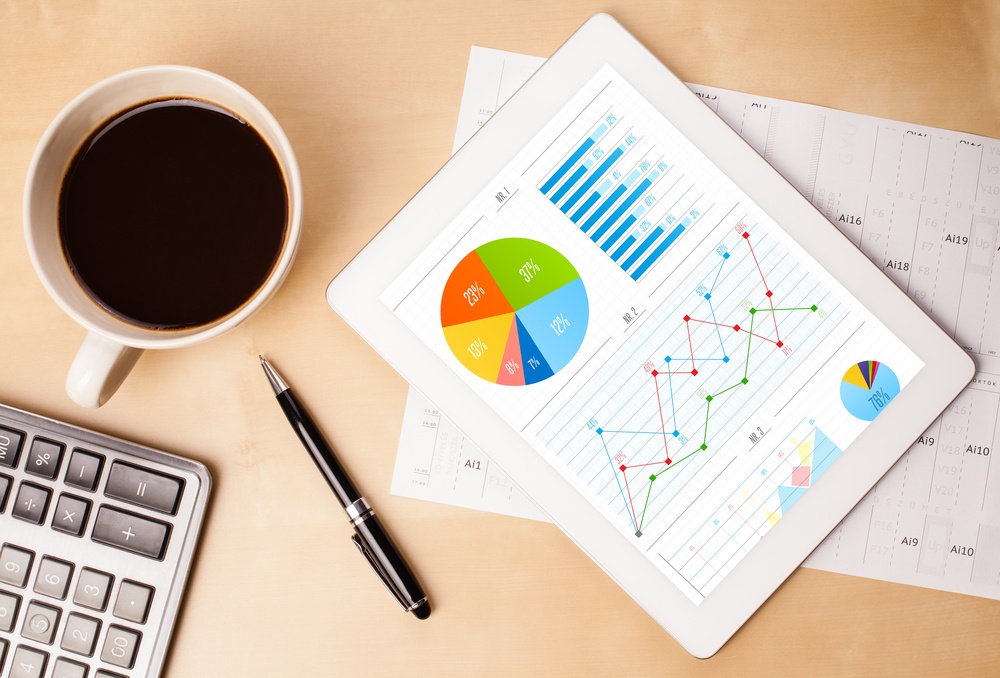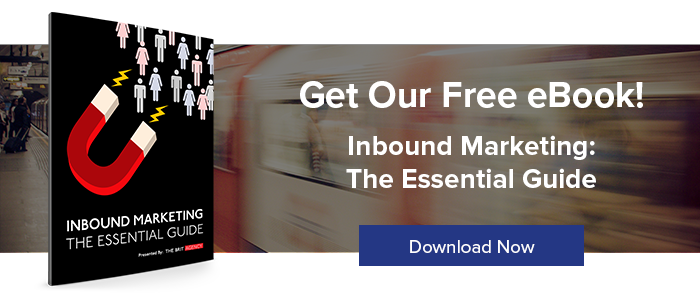You know what a bounce rate is right?
Let me remind you - a website bounce rate is the percentage of people who land on a page on your website, then leave. They don't click on anything else, they don't go to another page. They just land on one of your website pages, stay there for just a few seconds, then leave.
Basically, they landed on a website page, blog, or landing page - quickly checked it out, and decided it wasn't the right place, the visitor could have been searching for something and didn't see what they were looking for on your page, or they got to your site by accident - and your content was not relevent.
Let's dive into bounce rates a little deeper and find out why they are important when analysing your Inbound Marketing program metrics.
Here's what website bounces look like in your HubSpot Web Analytics Dashboard:

Bounce rates are important because they might indicate that the page content is irrelevant, or confusing to your site visitors. A high bounce rate on your home page for example, would be alarming, because that means people are only viewing that page alone, then clicking away. Even worse, they didn't respond to a Call To Action CTA, or fill out a form, which means you're losing out on conversions.
But don't jump into drastic actions like deleting a page or undertaking a redesign right away. There are some important steps you need to take before you figure out which action to take. That's why it's important, to examine other page metrics to see what might be behind the bounce rates.
Take a look at the time visitors spend on your website, where they're coming from, and what device they're using, and if your content and experience are aligned with all of those factors. Your analysis of all of this might uncover patterns that show you how to fix the bounce rate problem.
Here are four things you can do to improve (lower the bounce percentage) of bounce rates you have, and we recommend making bounce rate reviews part of your ongoing Inbound Website Design review process.
1) Lower Your Mobile Bounce Rate
Offering a good mobile experience is essential - not only is the speed of loading the page onto the mobile device critical, but the page UX design has to be optimized for mobile, so the key information is accessible at the top of the page. Having a responsive website is no longer enough -- engagement with the mobile version has to be user-friendly and interactive.
2) Examine and Understand Your Traffic Sources As They Have Different Bounce Rates
The new HubSpot Web Analytics Dashboard allows you to break down the bounce rate according to source. Sometimes, the sources directing traffic to a given page might have something to do with its bounce rate.
When you're distributing your website's content, the key to success - is the messaging - does it actually match the page to which you're directing visitors?
3) Other Web Page Distractions Can Increase Bounce Rates
Pop-ups, especially the big ones, are not only annoying and might cause visitors to immediately leave your web page, but also Google has updated its algorithm, and is handing out search ranking penalties, for excessive non-user friendly pop-ups, especially on mobile. (See my previous Blog - New Google algorithm update goes after pop-ups for more information on pop-ups).
4) Matching Keyword Intent To Your Content
When you evaluate the keywords and on-page SEO for page is ranking, make sure they're aligned with the actual content. Once you've done that, try looking at the buyer journey and where they need to be at in order to look at your page and its content, to help attract organic traffic to the right pages.
THE BRIT AGENCY is a B2B Inbound Marketing Agency providing Inbound Marketing, Inbound Website Design and Inbound Sales services to companies around the world. We're focused on growing website traffic, qualified leads and sales, using the Inbound lead generation and marketing automation process.
THE BRIT AGENCY is a certified Gold Tier Hubspot Partner, a HubSpot COS certified Inbound Website Design Agency, a Shopify eCommerce Partner, and a certified "Google Badged Agency Partner". We have offices in Toronto and Barrie, Canada, and Salisbury, UK.


